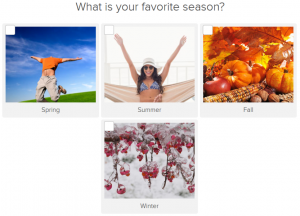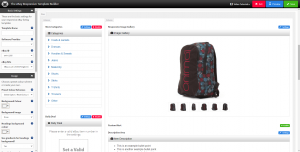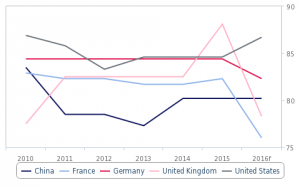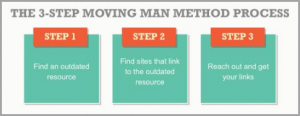These five trends are knocking traditional B2B marketing sideways. They’re here to stay.
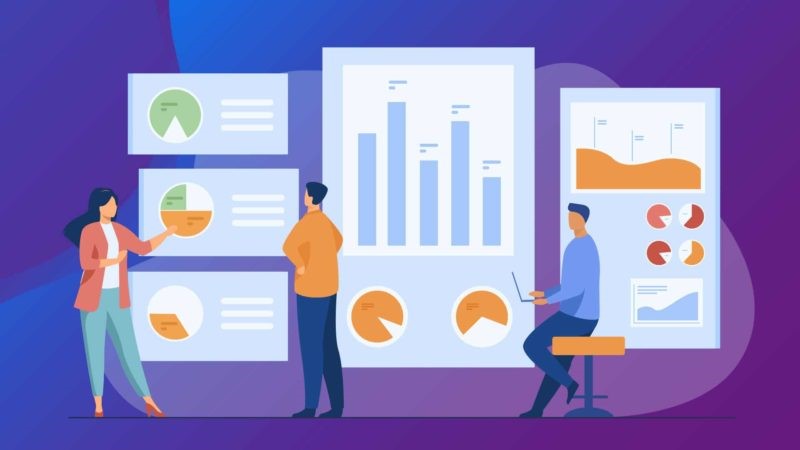
Like just about everything in marketing, B2B marketing is changing — and fast. Some of the trends I’m seeing have been developing for a while, but now they’re really taking off. What’s going on? Here are five of the most important developments.
1. Welcome the new generation of buyers
Gen X and Y are entering the buying group, in droves. And they roll their eyes at the old “OK Boomer” generation’s buying behavior. Theirs is distinctly digital. Digital first: apps, mobile, social media, video, podcasts, ecommerce — the works. And they don’t want to take a meeting with a salesperson if they can help it.
So, we marketers need to get on board. Produce the content they love. Find them wherever they are — like under a remote-work beach umbrella. And smooth our selling process — their buying process — to its digital best.
Interestingly, this change in buying behavior has major implications for the role of the marketing function in the firm. Who knows digital best? Marketing. Who has the data on these buyers? Marketing. Who is becoming less influential in the scenario? Sales. Hmmm. Could be that marketing will enjoy an increase in power and influence in B2B? Marketing flies the plane and sales serves the coffee, perhaps?
2. Ecommerce across the buying process
As digital natives expect to buy with much less assistance from sales reps, marketers are figuring out how to automate parts of even the most complex sales processes to serve these buyers — while at the same time reducing selling expenses and taking advantage of new tools like AI.
Traditionally, only simple products were suited to “mail order” (now ecommerce); products like copier paper and replacement parts. But B2B companies have been experimenting for decades with lower cost methods to reduce selling expense. I recall IBM in the 1990s with the “hybrid” program for selling huge mainframes by breaking the sales process into its component parts, and assigning various parts to cheaper channels, like inside sales, direct mail catalogs, and channel partners.
These days, marketers are emboldened just as buyers are demanding to place orders through their mobile phones. They’re using chatbots for top-of-funnel conversations, digital tools for custom price quotes, marketplaces for placing orders—the list goes on and on. See my earlier article for useful stats and resources on this subject.
3. Marketers get involved in account penetration and expansion
Traditionally, B2B marketers were expected to fill the top of the sales funnel with a steady stream of qualified leads, and sales functions like account management were charged with customer retention and expansion. But marketers these days are adding value to the retention side of the house, to the point where the annual Sagefrog B2B Marketing Mix report (registration required) listed “customer retention” as the #2 priority for marketing departments in 2023, and #3 in 2024—whereas the topic had not even made the top five in 2022.
This is a good thing. Marketers have plenty of tools and skills to help account managers achieve their goals. For example, data analytics around past purchase patterns can identify “next-best-product” suggestions for optimized upsell and cross sell. Statistical models can predict customer challenges that are likely to surface, giving sales teams “reasons to call” into their accounts and offer help. Marketing is really good at creating highly personalized outbound communications to customers, under the account manager’s name.
4. Video just gets bigger and bigger
Video’s growth as a highly effective tool in the B2B marcom kit continues, for a number of reasons:
- Its versatility and flexibility.
- Continued growth of video-centric media like TikTok and Instagram.
- Video’s ability to grab attention and generate emotion.
Video can be applied across the buying process, from brand storytelling, to customer testimonials, product demos, case studies, customer training and more.
One of the best known B2B video campaigns, Caterpillar’s “Built for It,” became quite a media darling at its peak in 2014-2015, as explained by Cat’s Archie Lyons, creative director of global brand marketing. Clearly, this campaign took a major investment of time, money and creativity.
But programs with more modest production values can be very effective, too. Take a look at how the industrial company Edmund Optics uses video to invite customers to an event, introduce products, and educate customers. Video is, as it should be, everywhere in B2B.
5. More and better automation of B2B processes
As we watch Scott Brinker’s annual roundup of martech tools grow to — this year — 14,106 items, B2B is neck and neck with B2C in building tech stacks a mile high. It’s hard to keep up! I’ve had an eye on some of the data and lead management tools that have come along. But need to research more about, first, what’s new and specific to B2B and, second, whether they are really adding value. I hear so many stories about how martech stacks are too complex, unintegrated, and underutilized. Grrr.
Outside of that gripe, it’s a pretty exciting time to be in B2B marketing.
The post 5 key trends we’re seeing in B2B marketing appeared first on MarTech.
(3)
Report Post
